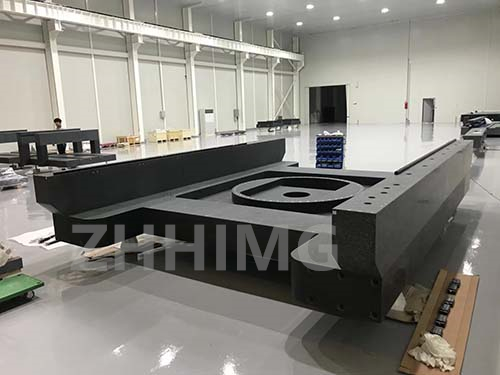Automation Technology is a leading manufacturer of high-performance machine vision systems for a wide range of applications. One of the key components of their products is granite machine parts, which provide a stable and durable platform for the various components of the vision system. In this article, we will provide a step-by-step guide on how to assemble, test and calibrate granite machine parts for Automation Technology products.
Assembling Granite Machine Parts
The first step in assembling granite machine parts for Automation Technology products is to ensure that you have all the necessary components. These typically include the granite base, brackets, screws, and other hardware. Make sure that all the components are clean and free from any debris or contaminants.
The next step is to mount the brackets onto the granite base. The brackets should be placed in the desired locations, and the screws should be tightened to hold them securely in place. Be sure to use the appropriate size and type of screws for the brackets and granite base.
Once the brackets are securely mounted, the next step is to install the various components of the vision system onto the brackets. This may include cameras, lighting systems, lenses, and other specialized hardware. It is important to ensure that all the components are positioned correctly, and that they are securely fastened to the brackets.
Testing Granite Machine Parts
Once the granite machine parts have been assembled, it is important to test them to ensure that they are functioning correctly. This can involve a range of tests, including vibration testing, temperature testing, and load testing. The exact tests will depend on the specific application and requirements of the vision system.
One important aspect of testing granite machine parts is to check for any defects or imperfections in the surface of the granite. This can be done using specialized equipment that can detect even the smallest surface defects. Any defects should be addressed before the vision system is put into operation, as they can affect its performance and accuracy.
Calibrating Granite Machine Parts
Calibration is a critical step in ensuring that the vision system is operating accurately and producing reliable results. Calibration involves adjusting the various components of the system to ensure that they are working together in the most effective way possible.
One key component of calibration is adjusting the camera and lens settings to optimize the image quality. This may involve adjusting the focus, brightness, contrast, and other settings to ensure that the image is clear and sharp. It may also involve adjusting the lighting system to minimize glare and other undesirable effects.
Another important aspect of calibration is ensuring that the system is properly aligned. This involves adjusting the position of the components, such as the cameras and lenses, to ensure that they are all lined up correctly. This can be done using specialized alignment tools that are designed specifically for this purpose.
Conclusion
In conclusion, assembling, testing, and calibrating granite machine parts for Automation Technology products is a complex and critical process that requires careful attention to detail. By following the steps outlined in this article, you can ensure that your vision system is operating at peak performance, producing reliable and accurate results. Whether you are a technician, engineer, or end-user, it is important to approach this process with a positive and proactive attitude, and to focus on delivering the best possible outcomes for your customers and clients.
Post time: Jan-08-2024

